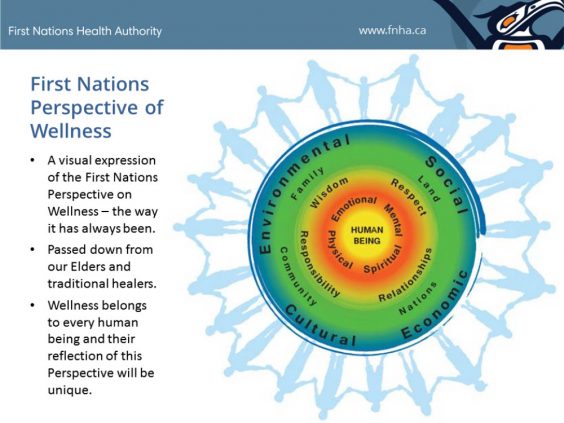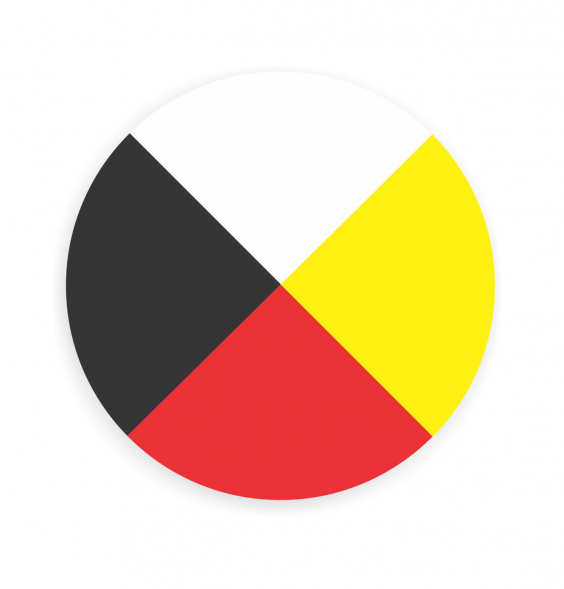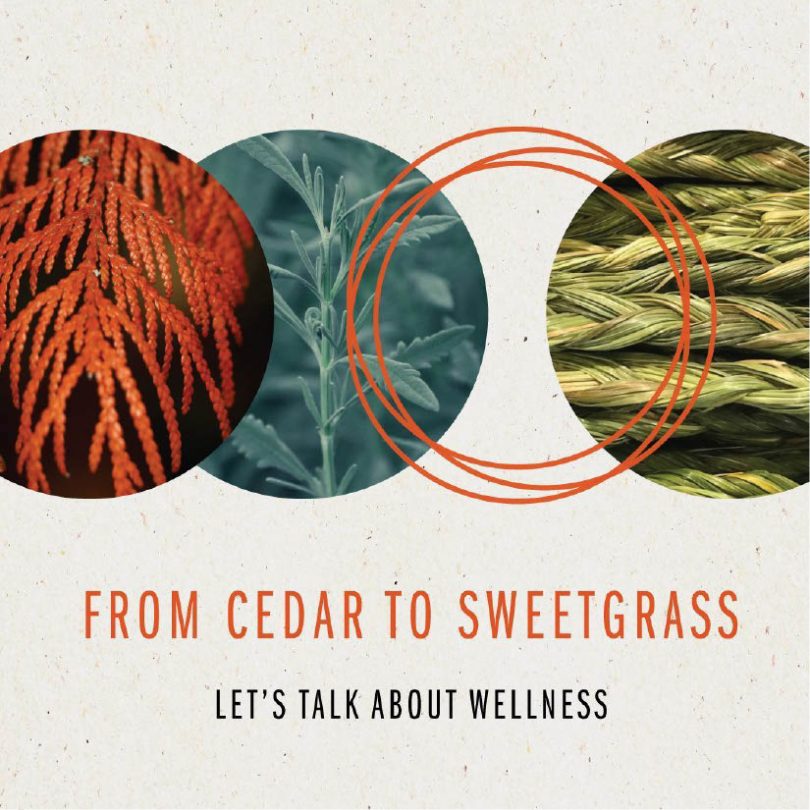In the Western world, wellness is often equated with health. They are both parts of our overall wellbeing, but it is wellness that looks to make people’s way of life better. Wellness is different for each person and is made up of many things, such as:
- check-ups with a doctor
- exercising in the park
- enjoying a healthy meal with family and friends
The Indigenous communities across Turtle Island* have wise teachings on wellness that everyone can learn from.
Health reflects our communities and culture
For wellness and health to thrive, the human spirit must be connected in harmony and balance with the world we live in. Health is a reflection of our communities and culture in many ways. When we take to heart our teachings and traditions, our health and compassion for others blossoms. This story explores what wellness means for Indigenous peoples, which includes First Nations, Métis, and Inuit cultures.
Indigenous peoples’ sacred medicines
The title “From Cedar to Sweetgrass” stands for the sacred medicines that many Indigenous Peoples use in ceremonies and everyday life to support wellness. Cedar and Sweetgrass are two of the four medicines that are often used. The others are Sage and Tobacco.
The First Nations View of Wellness
Wellness is not a one-size-fits-all. There is no right or wrong way a Nation, person or community may use the term. And it can change at different points in our lives.
The First Nations Health Authority created the image below. The circle shows the way First Nations knowledge keepers look at health and wellness and the understanding that wellness is a part of every aspect of our lives.

This tool was created from the wisdom of Elders, healers and partners across the province of so-called British Columbia. These ancestral lands were not given up to the colonizers and had Indigenous names and titles. This includes the territories of many Nations and Indigenous land protectors.
The model is made up of five circles and can apply to all peoples, Indigenous or not. The Outer Ring is an image of strong children, families, Elders and people in communities.
The Centre Circle stands for individual humans. We all deserve wellness and wellness starts with us.
The Second Circle shows how mental, emotional, spiritual and physical health are shared to create a balanced life. All of these things need care and attention and are the basis of wellness.
The Third Circle represents the basic values that support wellness – respect, wisdom, responsibility and relationships.
The Fourth Circle includes the people in our lives and the places we come from:
- the Nations our culture is born in
- our families (as defined by you)
- the land we live on
- our community
These are all important aspects of our lives that reflect our wellness and health.
The Fifth Circle shows the causes of our health and well-being – including the social, cultural, economic and environmental causes.
This holistic model of wellness can help guide Indigenous peoples on what is needed to care for in their lives when feeling lost.
For example, unless we take ownership over our own health, we won’t be able to make changes to our mental, physical or spiritual well-being. We may also feel we cannot take responsibility for our emotional well-being because it is difficult to build meaningful relationships with others in our community or circle of care.
The Medicine Wheel
You may wonder: “is this Perspective of Wellness similar to the Medicine Wheel?” Both of these models are circular, a common design feature in many Indigenous concepts of wellness.
The medicine wheel is one of a kind and created to include worldviews from many Nations.

The Medicine Wheel is the sacred symbol of life. It is important to many Indigenous cultures, such as different Anishinaabe [ah-nee-she-nah-beh] cultures including Cree, Ojibwe [oh-jib-way] and Saulteaux [sawl-toh] peoples. The Medicine Wheel is used by many peoples across Turtle Island as a guide to how to live their best lives. It is the source for traditional teachings and guidance and a metaphor for many spiritual teachings about life. There is no simple answer to the question, “What is a Medicine Wheel?” They come in many forms, with different meanings, and carry different stories.
There are a few aspects that Medicine Wheels often have in common. Most are circular and use the colours of black, white, red and yellow. Most are also divided into quarters that stand for:
- physical health
- emotional health
- mental health
- spiritual health or meaning
Some less common aspects may be included depending on where the teaching first came from. These include elements such as fire, water and air. You may also see animals in each quarter like the Wolf or Raven. Sometimes they have traditional medicines such as cedar or sage. As you can see, Sacred Circles or Medicine Wheels are used by many cultures and are unique to each. These sacred teachings have been wrongfully taken over by non-Indigenous people in past years, but the concepts and teachings are still held with sacred care by Indigenous Peoples.
Taking Action in Our Own Wellness
For each of us, wellness will depend on our own experiences, environment, and path through this journey of life. There is no one way to define wellness. Indigenous teachings across this land are similar, but each is different in unique ways to reflect each Nations, community, and traditional knowledge.
To live a good life, we must take action for our own wellness and the wellness of our communities. For example, you might:
- attend a traditional ceremony
- sing out loud for all to hear
- get a sweat on
- turn to those in your circle for support
These first steps may be scary or overwhelming. Small steps can make all the difference. Even a mighty Evergreen Cedar needs care and a little water and sunshine to grow its roots. We can all grow to feel confident in our health and wellness with the knowledge of our ancestors to guide us along the way.
This piece was written by Seren Friskie, Foundry’s Indigenous Wellness and Engagement Coordinator. The original version appears here.
* Turtle Island in this story signifies of North America. The name comes from stories handed down by Indigenous peoples. A turtle holds the world on its back as it floats in the oceans. It prospers and thrives when forests and homes are healthy.





